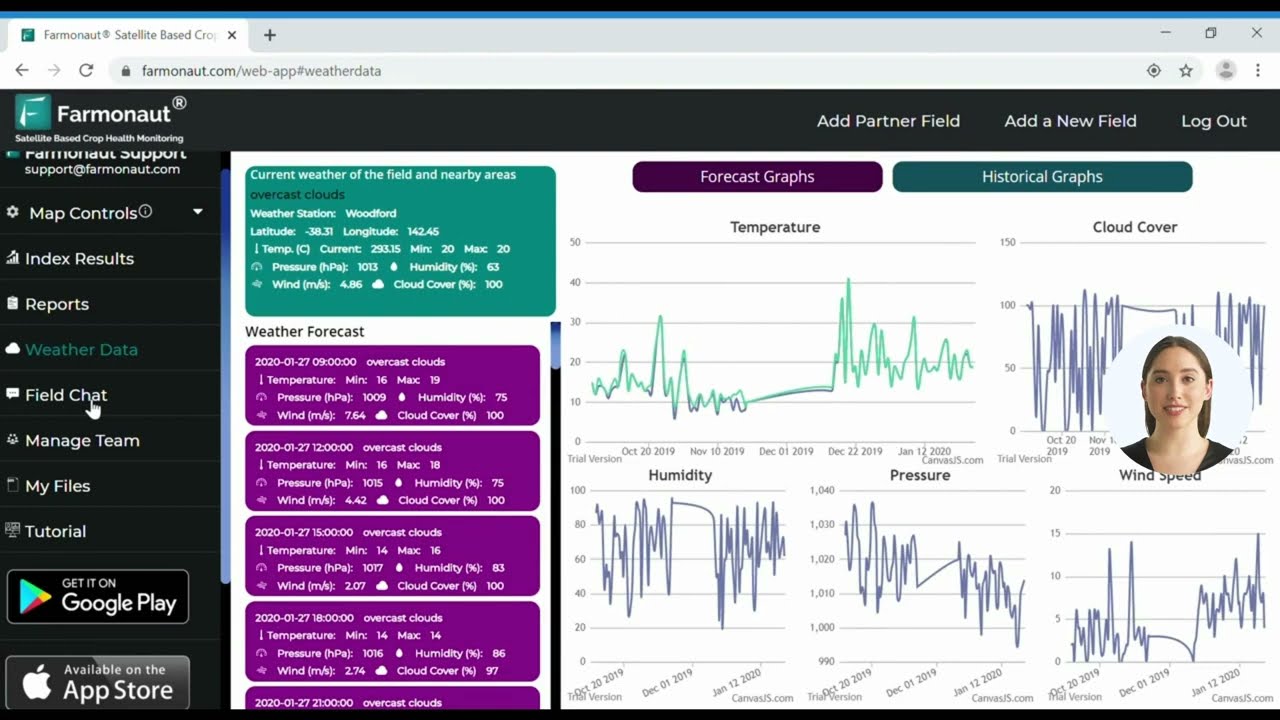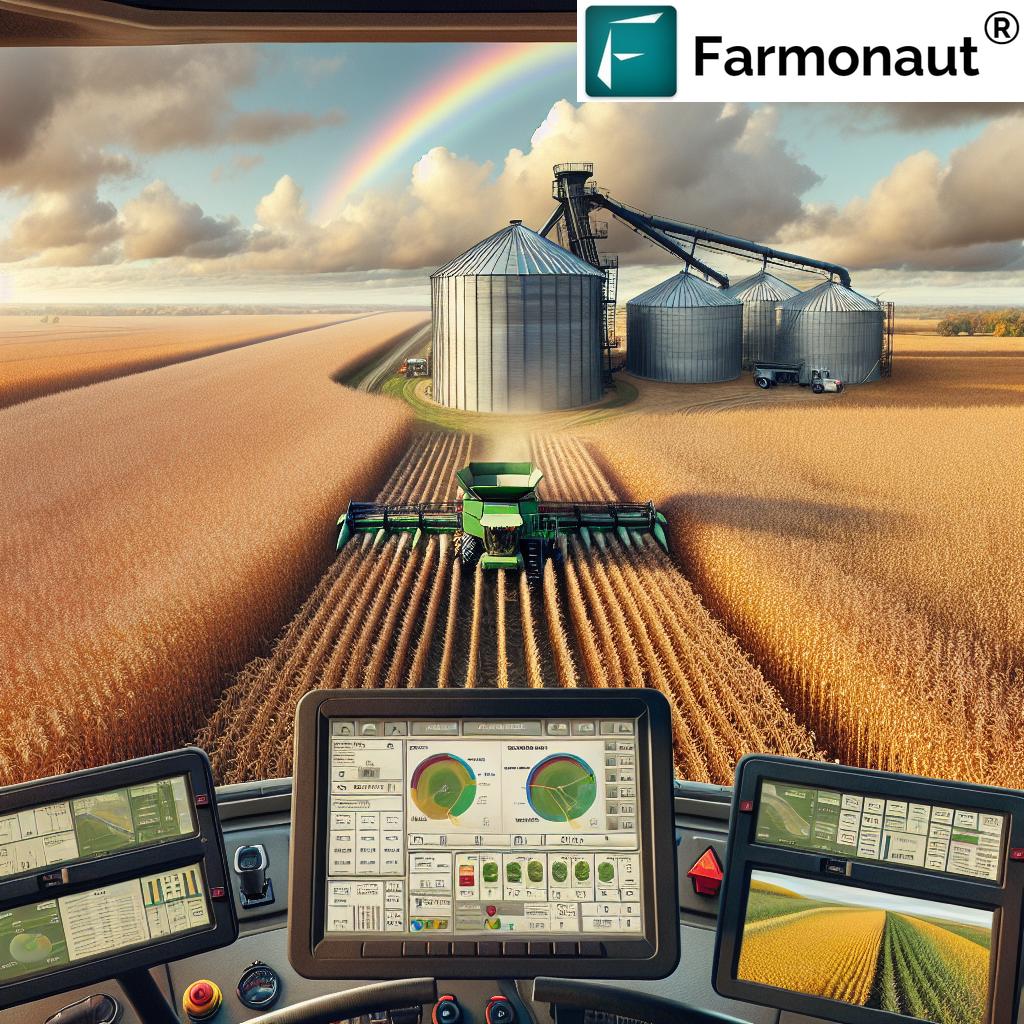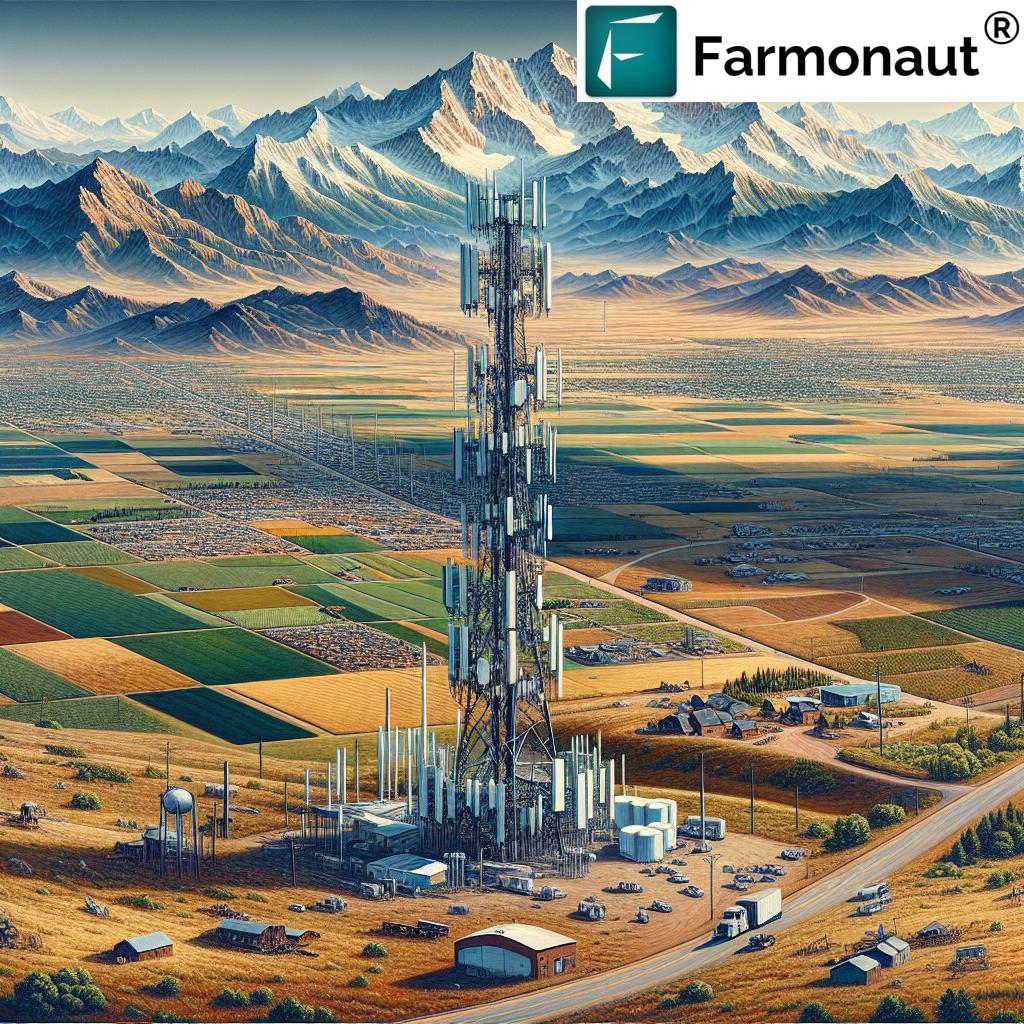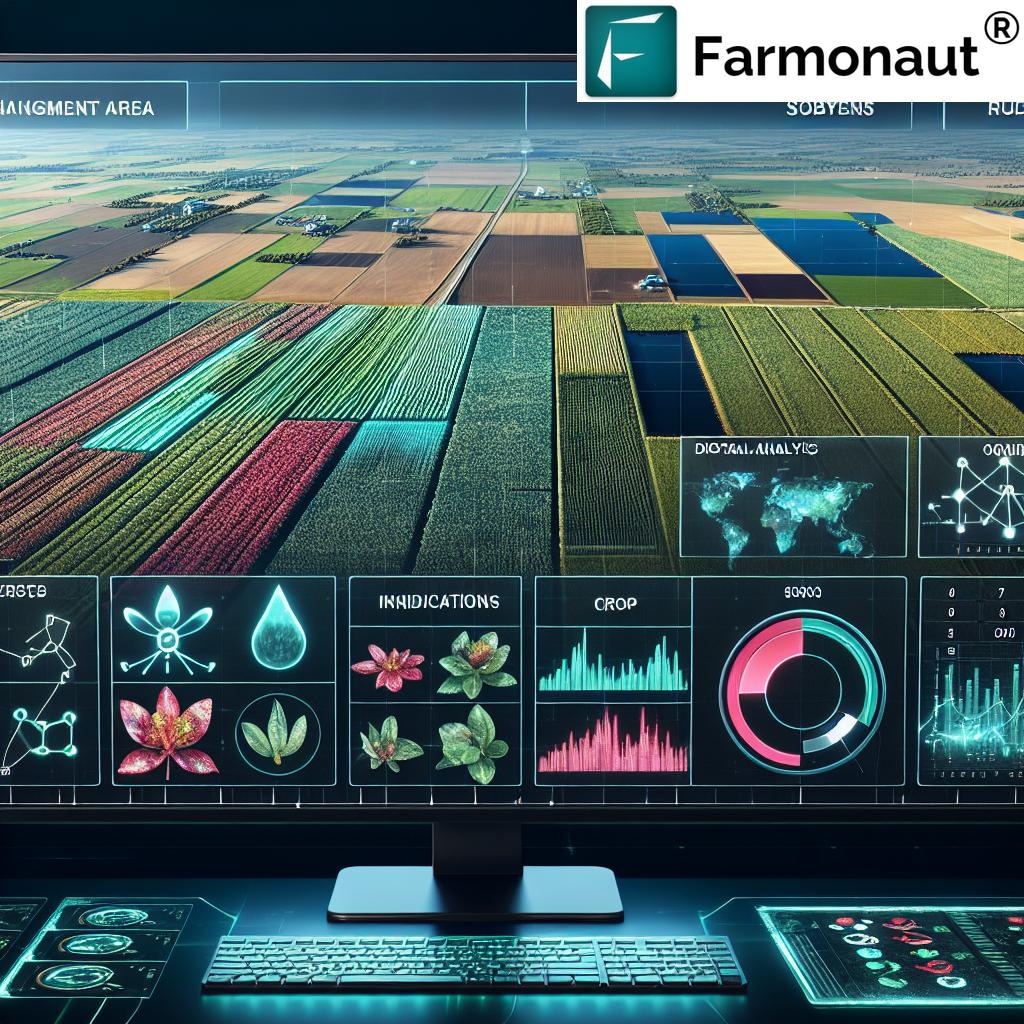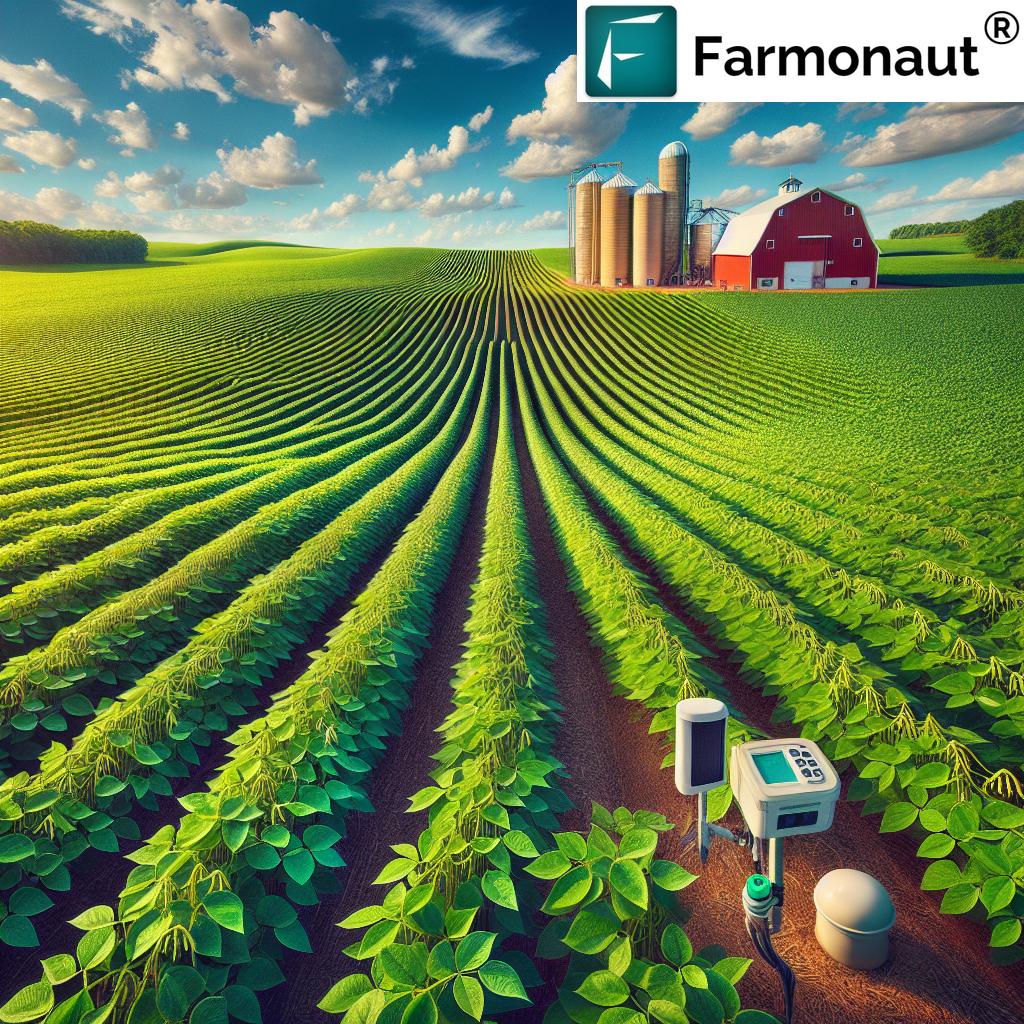Sustainable Soil Management: Why Iowa Farmers Are Skipping Fall Tillage for Better Crop Resilience in 2024
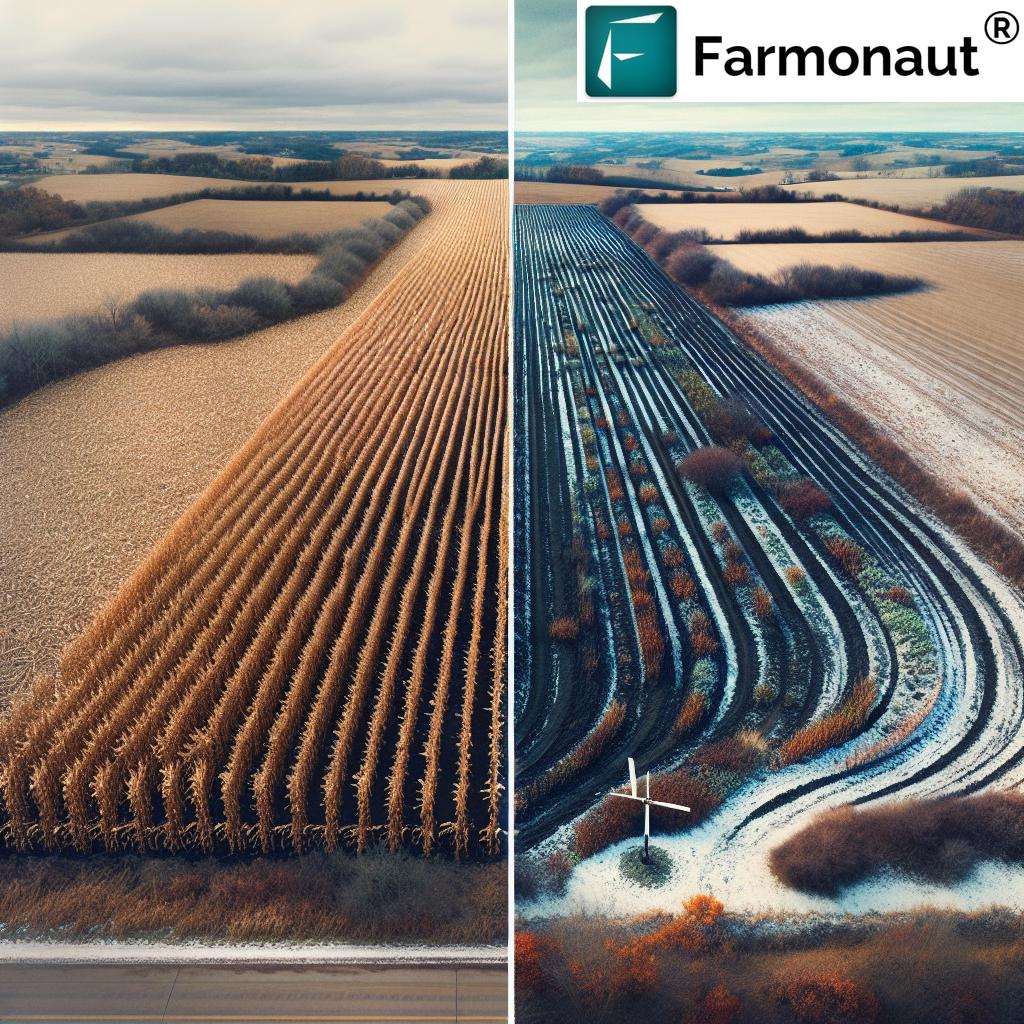
As we approach the fall season in the heartland of America, Iowa farmers are facing a crucial decision that could shape the future of their fields and the sustainability of agriculture in the Midwest. In 2024, a growing number of producers are choosing to skip traditional fall tillage practices in favor of more sustainable soil management techniques. This shift represents a significant departure from conventional farming methods and holds promise for improved crop resilience and long-term soil health.
“No-till farming can reduce soil erosion by up to 90% compared to conventional tillage methods.”
In this comprehensive exploration of sustainable agriculture practices, we’ll delve into the reasons behind this trend and examine the numerous benefits of no-till farming and other soil conservation techniques. From the rolling fields of Iowa to the broader agricultural landscape of the United States, we’re witnessing a revolution in how farmers approach soil structure improvement and prepare their land for the challenges of a changing climate.
The Shift Away from Traditional Fall Tillage
For generations, fall tillage has been a staple practice in Iowa and across the Midwest. Farmers have traditionally turned to their plows and discs after harvest, believing that tilling the soil would help prepare it for the next growing season. However, as our understanding of soil health has evolved, so too have the practices we employ to manage our most valuable agricultural resource.
In 2024, we’re seeing a significant shift in this paradigm. More and more Iowa farmers are recognizing that tilling dry soil in the fall can lead to a host of problems, including:
- Increased risk of soil erosion
- Loss of valuable nutrients
- Disruption of beneficial soil microbes
- Reduced water retention capacity
- Compaction of subsoil layers
Instead of reaching for the plow, forward-thinking producers are embracing no-till alternatives and other soil conservation techniques that promise to enhance the resilience of their crops and the health of their soil.
The Benefits of Skipping Fall Tillage
By choosing to forgo fall tillage, farmers are tapping into a range of benefits that can improve both the short-term productivity and long-term sustainability of their operations. Let’s explore some of the key advantages:
1. Erosion Control
One of the most significant benefits of skipping fall tillage is the reduction in soil erosion. When fields are left untilled, crop residues remain on the surface, creating a protective armor that shields the soil from the erosive forces of wind and water. This is particularly crucial during the harsh Iowa winters and early spring, when fields are most vulnerable to erosion.
2. Improved Soil Structure
No-till practices allow the natural processes of soil formation to continue uninterrupted. Over time, this leads to the development of a more stable soil structure with improved aggregation. These soil aggregates are essential for maintaining pore spaces that allow for better water infiltration and root penetration.
3. Enhanced Water Retention
Fields that are not tilled retain more moisture, thanks to the presence of crop residues and the preservation of soil structure. This improved water retention can be a critical factor in drought resistance, helping crops withstand periods of water stress during the growing season.
4. Increased Organic Matter
By leaving crop residues in place, farmers provide a steady source of organic matter to the soil. As these residues decompose, they enrich the soil with nutrients and support a thriving community of beneficial microorganisms.
5. Carbon Sequestration
No-till farming practices have been shown to increase the soil’s capacity to sequester carbon, making it an important tool in the fight against climate change. By keeping carbon locked in the soil, farmers can contribute to reducing greenhouse gas emissions while improving soil health.
6. Cost Savings
Skipping fall tillage can lead to significant cost savings for farmers. Reduced fuel consumption, less wear and tear on equipment, and decreased labor requirements all contribute to a healthier bottom line.
Innovative Soil Health Management Strategies
As Iowa farmers move away from fall tillage, they’re adopting a range of innovative soil health management strategies. These approaches are designed to work in harmony with natural processes to build more resilient and productive agricultural systems.
Cover Cropping
One of the most popular soil conservation techniques being embraced by Midwest farmers is the use of cover crops. These plants, typically sown after the main crop harvest, provide numerous benefits:
- Protect the soil surface from erosion
- Improve soil structure through root growth
- Increase organic matter content
- Suppress weeds
- Enhance nutrient cycling
Cover crops like cereal rye, winter wheat, and various legumes are becoming increasingly common sights in Iowa fields during the off-season.
Crop Rotation
Diversifying crop rotations is another key strategy for improving soil health. By alternating between different crops, farmers can:
- Break pest and disease cycles
- Improve nutrient availability
- Enhance soil structure
- Increase biodiversity
In Iowa, this often means moving beyond the traditional corn-soybean rotation to include small grains, legumes, or forage crops.
Precision Agriculture
Advanced technology is playing an increasingly important role in sustainable soil management. Precision agriculture tools, such as those offered by Farmonaut, allow farmers to:
- Monitor crop health in real-time
- Optimize resource use
- Make data-driven decisions about field management
By leveraging satellite imagery and AI-powered analytics, farmers can identify areas of their fields that may require specific interventions, ensuring that resources are used efficiently and effectively.
Challenges and Considerations
While the benefits of skipping fall tillage are clear, it’s important to acknowledge that transitioning to no-till practices can present some challenges for farmers. Some of the considerations include:
- Initial yield reductions during the transition period
- Potential increase in certain pests or diseases
- Need for specialized equipment
- Learning curve associated with new management practices
However, many farmers find that these challenges are outweighed by the long-term benefits to soil health and farm sustainability.
“Leaving crop residues on fields can increase soil organic matter by 1-2% over 5-10 years of consistent practice.”
The Role of Technology in Sustainable Soil Management
As we move towards more sustainable agricultural practices, technology is playing an increasingly crucial role. Innovative tools and platforms are helping farmers make informed decisions about soil management and crop production. One such technology leader in this space is Farmonaut, which offers advanced satellite-based farm management solutions.
Farmonaut’s platform provides farmers with valuable insights into:
- Real-time crop health monitoring
- Soil moisture levels
- Weather patterns and forecasts
- Resource optimization recommendations
By leveraging these technologies, Iowa farmers can make more precise decisions about when and how to manage their fields, even without traditional tillage practices.
Explore Farmonaut’s API for advanced agricultural data
Comparing Traditional Tillage vs. No-Till Practices
To better understand the impact of no-till farming, let’s compare it directly with traditional tillage methods:
| Aspect | Traditional Tillage | No-Till Practices |
|---|---|---|
| Soil Erosion Risk (Estimated % of topsoil lost annually) | 5-20% | 0.5-2% |
| Moisture Retention (Estimated % improvement) | Baseline | 20-30% improvement |
| Soil Organic Matter (Estimated % increase over 5 years) | 0-0.5% | 1-2% |
| Microbial Activity | Low to Medium | High |
| Crop Resilience to Drought | Low to Medium | High |
| Estimated Fuel Costs ($ per acre) | $15-$30 | $5-$10 |
| Long-term Soil Health Impact | Negative to Neutral | Positive |
This comparison clearly illustrates the advantages of no-till practices across various important aspects of soil and crop management.
The Broader Impact: From Iowa to the World
While our focus has been on Iowa farmers, the principles of sustainable soil management through no-till practices are applicable far beyond the Midwest. From the Northern Plains to the Southern states, farmers across the United States are recognizing the value of preserving soil structure and building resilience into their agricultural systems.
Moreover, these practices are gaining traction globally. In regions facing challenges such as desertification, water scarcity, or the impacts of climate change, no-till farming and other conservation agriculture techniques are proving to be valuable tools for sustainable food production.
Learn more about Farmonaut’s API Developer Docs
Looking Ahead: The Future of Sustainable Agriculture
As we look towards the future, it’s clear that sustainable soil management practices like no-till farming will play an increasingly important role in global agriculture. The challenges of feeding a growing population while preserving our natural resources and mitigating climate change will require innovative approaches and a willingness to adapt traditional farming methods.
In Iowa and beyond, farmers who embrace these sustainable practices are not only improving the health and productivity of their own land but are also contributing to a more resilient and sustainable food system for generations to come.
Embracing Technology for Sustainable Farming
As we continue to advance in sustainable soil management practices, the role of technology becomes increasingly crucial. Farmonaut’s innovative platform offers farmers powerful tools to enhance their decision-making processes and optimize their farming practices. By leveraging satellite imagery and AI-driven insights, farmers can gain a deeper understanding of their fields and make more informed choices about soil management.
Some key features of Farmonaut’s technology that support sustainable farming include:
- Real-time crop health monitoring using NDVI (Normalized Difference Vegetation Index)
- Soil moisture analysis to optimize irrigation
- Weather forecasting for better planning of field operations
- AI-powered advisory systems for personalized farm management strategies
These tools are particularly valuable for farmers transitioning to no-till practices, as they provide the data-driven insights needed to manage fields effectively without relying on traditional tillage methods.
The Economic Case for Sustainable Soil Management
While the environmental benefits of skipping fall tillage are clear, it’s important to also consider the economic implications for farmers. In many cases, adopting no-till practices can lead to significant cost savings and improved profitability over time. Here are some key economic considerations:
- Reduced Fuel Costs: With fewer passes over the field, farmers can significantly cut their fuel expenses.
- Lower Equipment Wear and Tear: Less frequent use of heavy machinery means reduced maintenance and replacement costs.
- Improved Water Efficiency: Better soil structure and increased organic matter content can lead to more efficient water use, potentially reducing irrigation costs.
- Long-term Yield Stability: While there may be a transition period, many farmers report more stable yields over time with no-till practices, especially during challenging weather conditions.
- Potential for Carbon Credits: As carbon markets develop, farmers practicing no-till may have opportunities to earn additional income through carbon sequestration credits.
By embracing sustainable soil management techniques, Iowa farmers are not only conserving their land for future generations but also positioning themselves for long-term economic success in an ever-changing agricultural landscape.
Adapting to Climate Change Through Soil Conservation
As we face the realities of climate change, sustainable soil management practices become even more critical. No-till farming and other conservation techniques can play a significant role in helping farmers adapt to changing weather patterns and extreme events. Here’s how:
- Drought Resistance: Improved soil structure and increased organic matter content enhance the soil’s ability to retain moisture, helping crops withstand periods of drought.
- Flood Mitigation: No-till fields often have better water infiltration rates, reducing surface runoff during heavy rainfall events.
- Temperature Regulation: Crop residues left on the surface can help moderate soil temperatures, protecting crops from extreme heat or cold.
- Carbon Sequestration: By increasing soil organic matter, no-till practices help remove carbon dioxide from the atmosphere, contributing to climate change mitigation efforts.
By adopting these practices, Iowa farmers are not only protecting their own operations but also contributing to broader efforts to address climate change impacts on agriculture.
The Role of Education and Outreach
As more farmers consider transitioning to no-till practices, education and outreach become crucial. Universities, extension services, and agricultural organizations play a vital role in disseminating information and providing support to farmers. Some key areas of focus include:
- Workshops and field days demonstrating no-till techniques
- Research on the long-term impacts of no-till farming in different soil types and climates
- Peer-to-peer learning opportunities for farmers to share experiences and best practices
- Training on the use of technology and data in no-till systems
By investing in education and outreach, we can accelerate the adoption of sustainable soil management practices across Iowa and beyond.
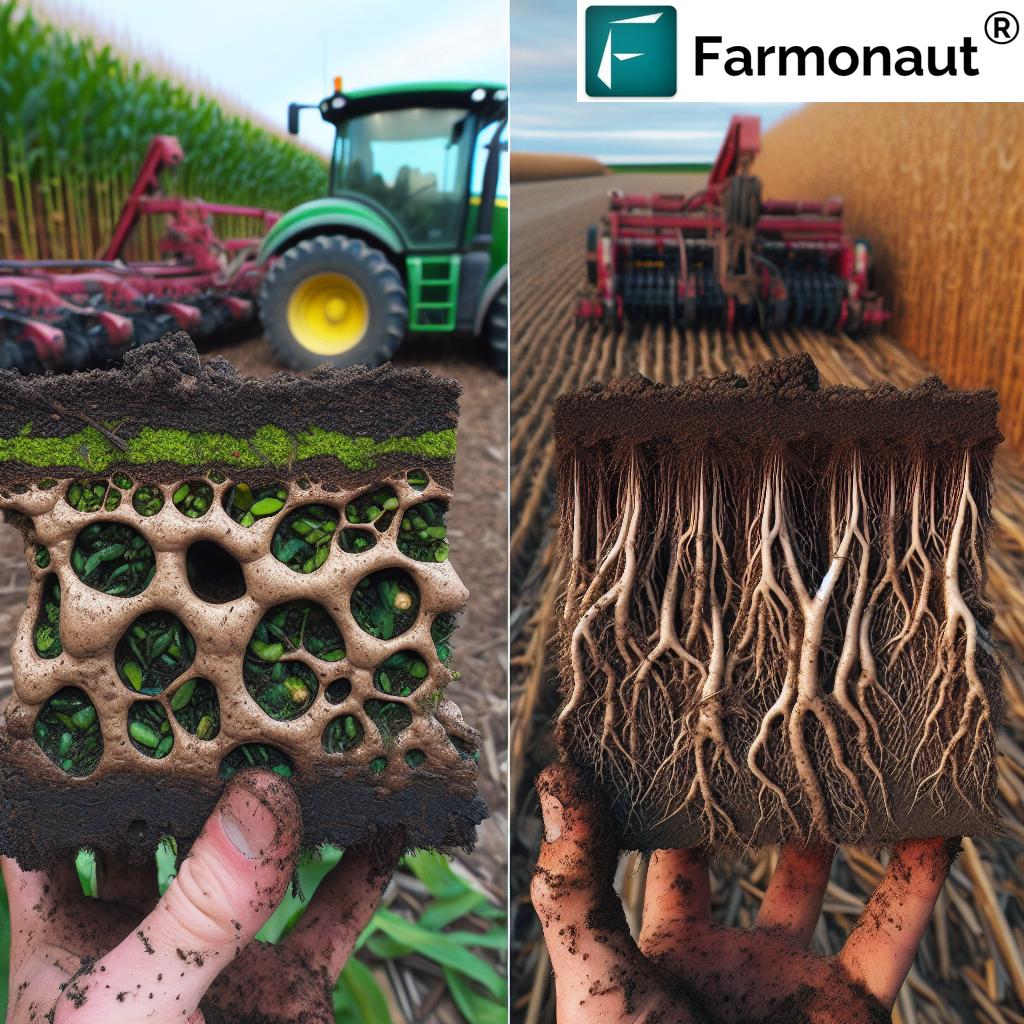
Conclusion: A Sustainable Path Forward
As we’ve explored throughout this article, the decision by Iowa farmers to skip fall tillage in favor of more sustainable soil management practices represents a significant shift in agricultural thinking. By embracing no-till farming, cover cropping, and other conservation techniques, these farmers are not only improving the health and resilience of their soil but also contributing to a more sustainable and climate-resilient food system.
The benefits of these practices extend far beyond the individual farm, positively impacting water quality, biodiversity, and even global climate change mitigation efforts. As we look to the future of agriculture in Iowa and across the world, it’s clear that sustainable soil management will play a crucial role in meeting the challenges of food security and environmental conservation.
By leveraging advanced technologies like those offered by Farmonaut, farmers can make more informed decisions about their soil management practices, optimizing their operations for both productivity and sustainability. As we continue to innovate and learn, the path towards a more resilient and sustainable agricultural future becomes clearer, with Iowa farmers leading the way in 2024 and beyond.
FAQ Section
Q: What are the main benefits of skipping fall tillage?
A: The main benefits include reduced soil erosion, improved water retention, increased organic matter, enhanced soil structure, and cost savings on fuel and equipment.
Q: How long does it take to see the benefits of no-till farming?
A: While some benefits like reduced erosion are immediate, others such as improved soil structure and increased organic matter can take 3-5 years to become fully apparent.
Q: Are there any crops that don’t do well with no-till methods?
A: While most crops can adapt to no-till systems, some crops like potatoes or other root vegetables may require some soil disturbance. However, reduced tillage methods can often be used as an alternative.
Q: How does no-till farming impact weed management?
A: Initially, weed pressure may increase, but over time, as the soil ecosystem balances, weed problems often decrease. Cover crops and careful herbicide management are important tools in no-till weed control.
Q: Can no-till farming be practiced on all soil types?
A: While no-till can be adapted to most soil types, some heavy clay soils may present challenges. In these cases, reduced tillage or other conservation practices may be more appropriate.








